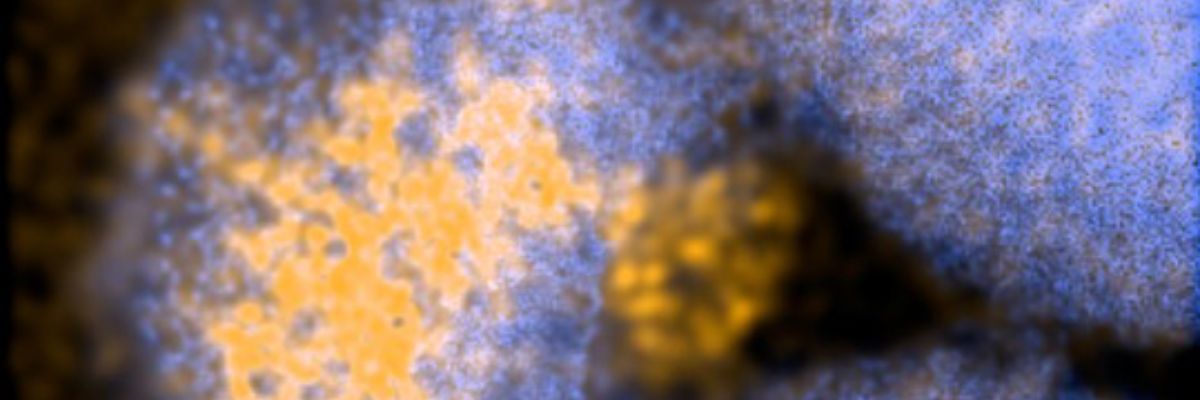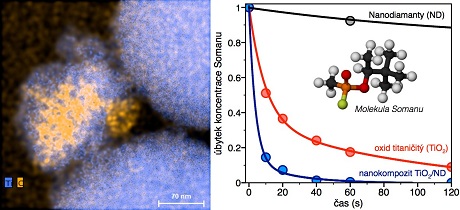
Nanodiamonds help decompose nerve agents
07. 10. 2019
A new diamond-titanium nanocomposite may help decompose dangerous chemical warfare agents such as Soman in much more effective manner. It was developed in cooperation of scientists from the Czech Academy of Sciences, namely by the teams of Štěpán Stehlík from the Institute of Physics and Jiří Henych from the Institute of Inorganic Chemistry, together with the teams of Bohuslav Rezek from the Faculty of Electrical Engineering at the Czech Technical University, Karel Mazanec from the Military Resarch Institute, and Lars Österlund from the Uppsala University.
“Nanodiamonds have proved to be a very suitable material as they are relatively inexpensive and enable a very simple modification of their surface chemistry, and, consequently, the properties of the resulting composite” confirms Štěpán Stehlík, who deals with the preparation and the study of diamond nanoparticles at the Institute of Physics of the CAS.
The idea of using nanodiamonds in the nanocomposite originated from Stehlík‘s close cooperation with the Institute of Inorganic Chemistry, together with which he develops more efficient methods of processing nanodiamods.

Translated: Stanislav Široký
Read also
- Public Hearing: “Making Sense of Open Science”
- SUNER-C concludes after three years dedicated to the renewable energy future
- A trapped state: The pandemic impact on public attitudes, trust, and behavior
- Aerial archaeology: Tracing the footsteps of our ancestors from the sky
- Archaeologists uncover ancient finds along Prague Ring Road
- Our microbiome largely depends on what we eat, says microbiologist Michal Kraus
- The ABCs of writing: Why did its invention mark a turning point for humankind?
- We learn, remember, forget… What can memory actually do? And can we outsmart it?
- New Center for Electron Microscopy in Brno opens its doors to global science
- The hidden lives of waste: What can we learn from waste workers and pickers?
The Czech Academy of Sciences (the CAS)
The mission of the CAS
The primary mission of the CAS is to conduct research in a broad spectrum of natural, technical and social sciences as well as humanities. This research aims to advance progress of scientific knowledge at the international level, considering, however, the specific needs of the Czech society and the national culture.
President of the CAS
Prof. Eva Zažímalová has started her second term of office in May 2021. She is a respected scientist, and a Professor of Plant Anatomy and Physiology.
She is also a part of GCSA of the EU.